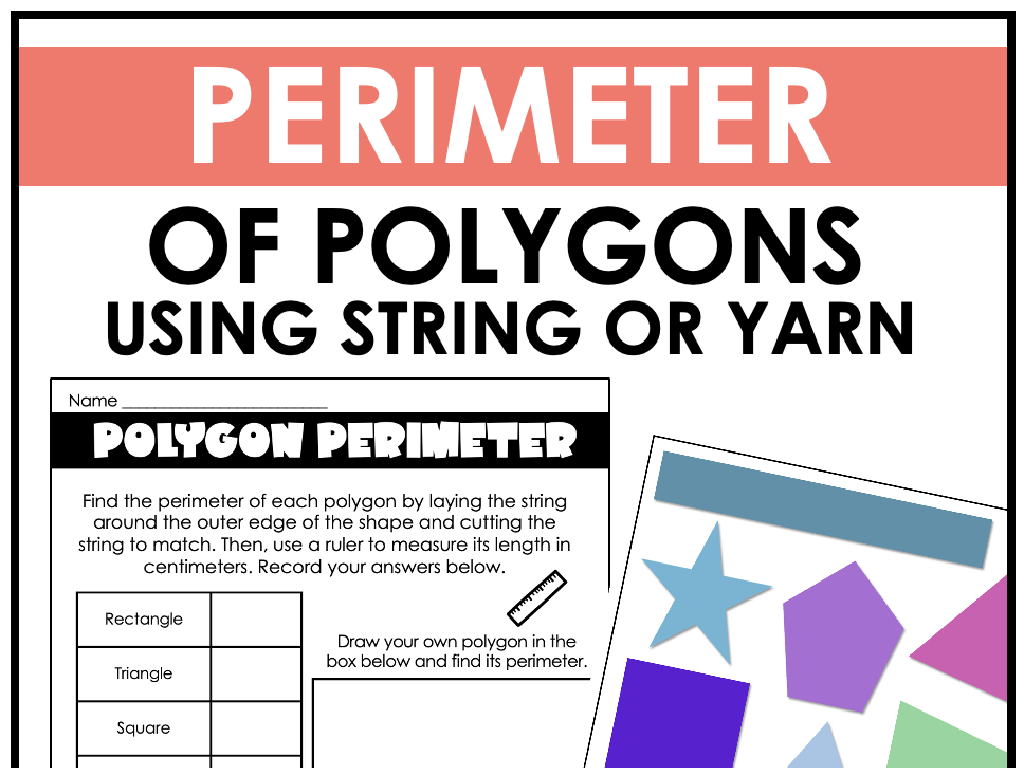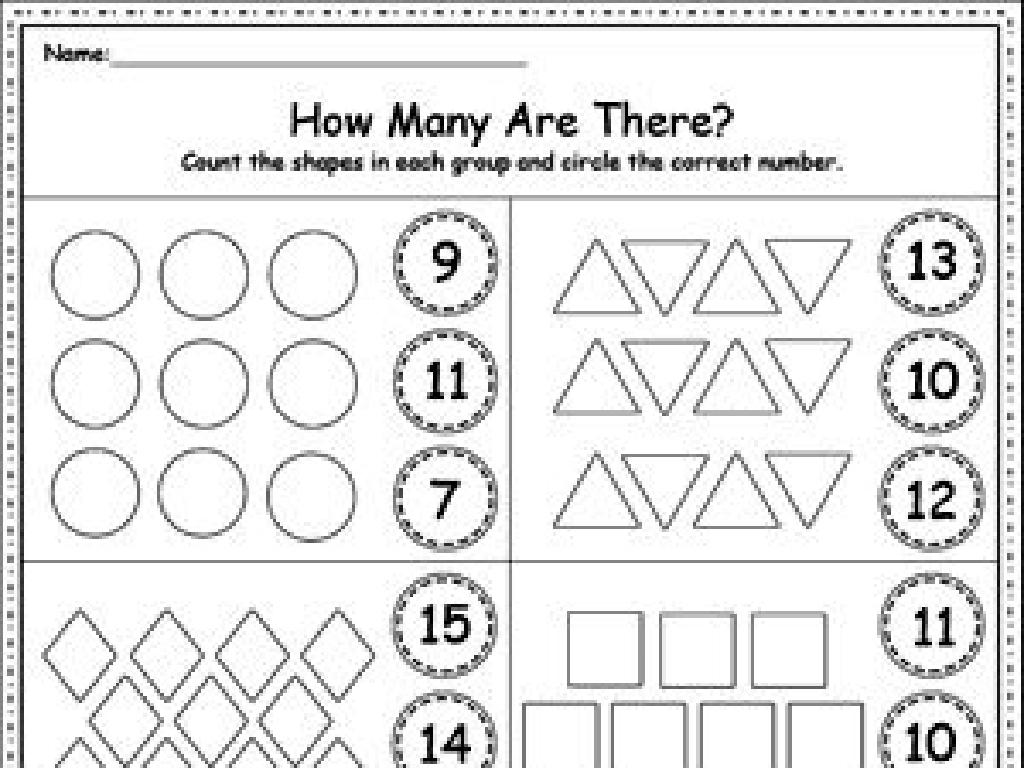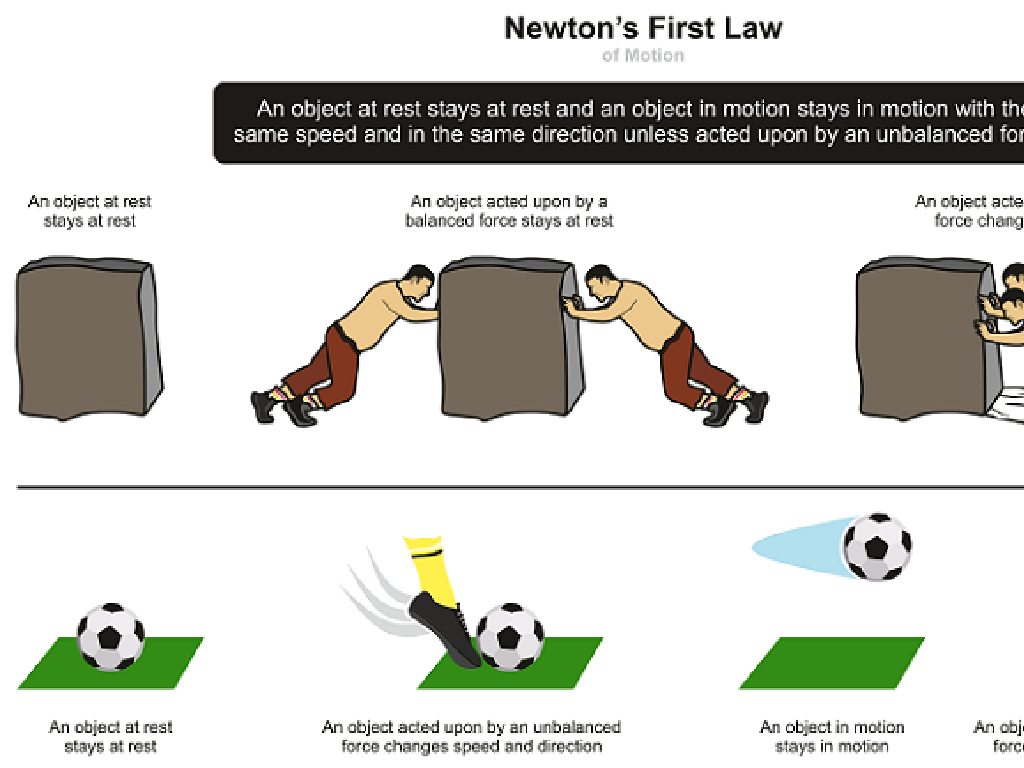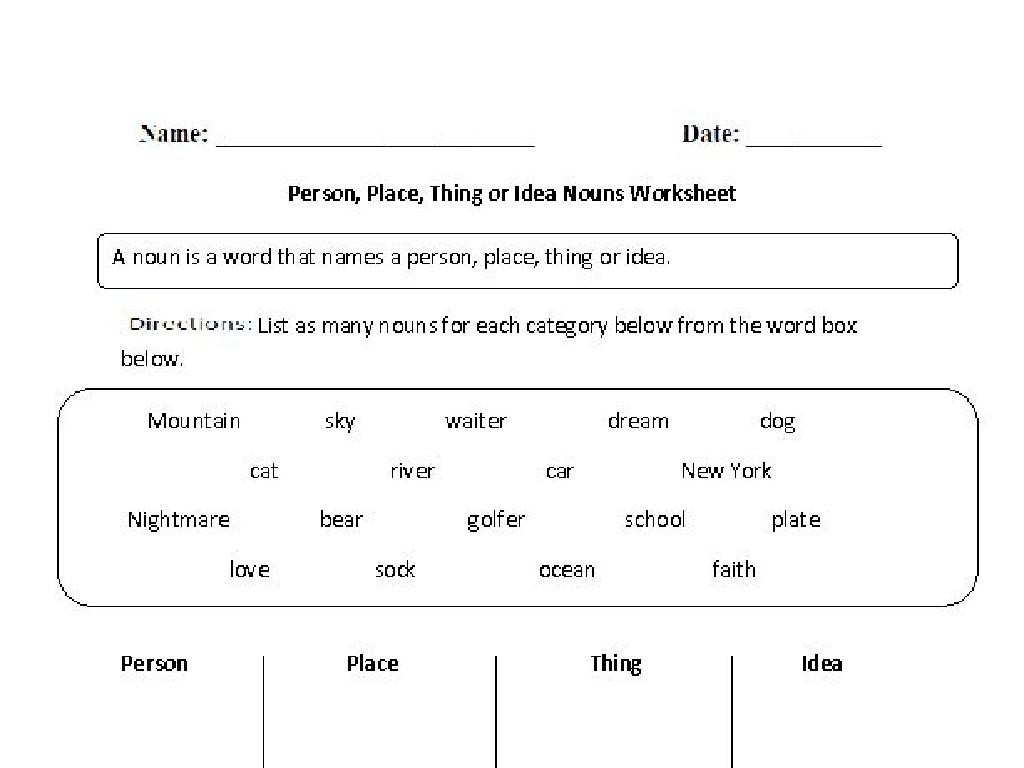Estimate Differences By Rounding: Up To 1,000
Subject: Math
Grade: Third grade
Topic: Estimate Differences
Please LOG IN to download the presentation. Access is available to registered users only.
View More Content
Estimating Differences by Rounding
– What is estimation?
– Estimation helps us find a number close to the exact amount.
– Rounding numbers to estimate
– To estimate, round numbers to the nearest ten or hundred, then subtract.
– Why estimation is helpful
– Estimation saves time and is used in daily life, like in shopping.
– Practice estimation with examples
– Let’s round 834 to 830 and 467 to 470, now what’s the estimated difference?
|
This slide introduces the concept of estimation, focusing on its application in rounding numbers up to 1,000 to estimate differences. Begin by explaining that estimation is a method to quickly find an approximate value that is close to the exact amount. Emphasize the importance of estimation as a practical skill in everyday situations, such as making quick calculations when shopping or planning time. Teach students how to round numbers to the nearest ten or hundred as a strategy to estimate differences. Provide examples and encourage students to practice with their own sets of numbers. The goal is to build their confidence in using estimation as a tool for quicker and easier mental math.
Understanding Estimation
– Estimation: A math ‘guess’
– It’s a rough number, close to the exact amount
– Why we use estimation
– To solve problems quickly & with ease
– Estimation makes math simpler
– Instead of exact numbers, we use ones that are easy to work with
– Daily life examples of estimation
– Guessing the time, counting people in a room, or calculating change
|
This slide introduces the concept of estimation, which is a fundamental skill in mathematics, especially useful when exact numbers are not required. Estimation allows students to make a reasonable ‘guess’ that is close to the exact number. Emphasize that estimation is not just about guessing; it’s about making an educated guess based on the information available. Discuss why estimation is a practical skill in everyday life, such as when we’re in a hurry or when we need to make quick decisions. Provide relatable examples such as estimating the number of apples in a bowl, the number of pages in a book, or the amount of time a trip will take. Encourage students to think of times they have used estimation outside of school and share their experiences.
Rounding Numbers Up to 1,000
– What is rounding?
– Rounding makes numbers simpler while staying near the original value.
– Rules for rounding numbers
– If a digit is 5 or more, round up. If it’s 4 or less, round down.
– Practice rounding to nearest ten
– Example: Round 76 to the nearest ten. 76 is closer to 80 than 70, so it rounds up to 80.
– Practice rounding to nearest hundred
– Example: Round 376 to the nearest hundred. 376 is closer to 400 than 300, so it rounds up to 400.
|
This slide introduces the concept of rounding numbers as a way to simplify them while maintaining a value that is close to the original number. It’s important to explain the rules clearly: look at the digit to the right of the place you are rounding to, and if it’s 5 or more, round up; if it’s 4 or less, round down. Provide practice examples for rounding to the nearest ten and hundred, using numbers up to 1,000. Encourage students to think of rounding as a way to estimate sums or differences quickly. For example, when shopping, if an item costs $76, and they have $80, they can quickly estimate that they have enough money. This practical application helps students understand the usefulness of rounding in everyday life.
Estimating Differences by Rounding
– Learn to estimate by rounding
– Rounding makes numbers simpler to work with
– Why round to ten or hundred?
– Rounding to nearest ten or hundred gives a close estimate
– Example: Round & estimate difference
– If we have 834 – 217, round to 830 – 220 = 610
– Practice makes perfect
|
This slide introduces the concept of estimating differences by rounding numbers to make calculations easier for third graders. Start by explaining that rounding helps simplify numbers. Emphasize the importance of rounding both numbers to the nearest ten or hundred to get a close estimate of the difference. Work through an example together, such as rounding 834 to 830 and 217 to 220, then subtracting to estimate the difference. Encourage students to practice with different numbers to become comfortable with the process. Provide additional examples and set up activities where students can round and estimate differences in pairs or groups.
Let’s Practice Rounding!
– Round to the nearest ten
– If a number ends in 1-4, round down. Ends in 5-9, round up.
– Round to the nearest hundred
– Look at the tens digit. 1-4, round down. 5-9, round up.
– Discuss answers with a partner
– Explain your rounding method to your partner.
– Understand rounding concepts
|
This slide is for a class activity focused on rounding numbers. Provide students with a list of numbers and instruct them to round to the nearest ten and hundred. Encourage them to use the rules of rounding: if the digit is 1-4, round down; if it’s 5-9, round up. After rounding, students should pair up to compare and discuss their answers. This activity helps reinforce their understanding of rounding and allows them to practice verbalizing their thought process. Possible numbers for the activity: 34, 67, 215, 948. For the nearest ten: 34 -> 30, 67 -> 70. For the nearest hundred: 215 -> 200, 948 -> 950.
Estimating Differences in Word Problems
– Apply rounding skills to estimate
– Round numbers to the nearest ten or hundred to estimate the difference
– Read and understand the problem
– Look for keywords that help understand what the problem is asking
– Group activity: solve word problems
– Work together to find estimates for the differences in the problems provided
– Discuss estimates and solutions
|
This slide introduces students to the application of rounding skills for estimating differences in word problems. Begin by reviewing rounding to the nearest ten and hundred. Emphasize the importance of reading comprehension in understanding what the problem is asking. For the group activity, provide several word problems that require students to estimate differences by rounding numbers up to 1,000. Encourage students to discuss their thought process and how they arrived at their estimates. After the activity, review the estimates as a class and discuss the solutions. This will help students see the practical use of estimation in everyday math problems and build their confidence in solving them.
Game Time: Estimate the Difference!
– Engage in estimation game
– Work together in small groups
– Play ‘Estimate the Difference’
– Use rounding skills to estimate the difference between numbers up to 1,000
– Present and explain estimates
– Share your group’s strategy and reasoning behind your estimates
|
This interactive game is designed to help students practice estimation by rounding numbers to the nearest ten or hundred. Divide the class into small groups and provide each with a set of numbers to estimate the difference. Encourage them to use rounding to make the task easier. After the activity, each group will present their estimated differences and explain the process they used to arrive at their answers. This will help reinforce their understanding of estimation and rounding. Possible activities: 1) Estimating the cost of grocery items, 2) Estimating the distance between two locations on a map, 3) Estimating the time it takes to complete a task, 4) Estimating the number of items in a jar, 5) Estimating the score of a sports game.
Review and Reflect: Estimating Differences
– Importance of estimation
– Estimation helps us quickly find answers that are close enough.
– Rounding’s role in estimation
– Rounding numbers makes it easier to subtract them in our heads.
– Share your learning
– Think of one thing you’ve learned about estimating differences.
|
This slide aims to consolidate the students’ understanding of the estimation process and its practicality in everyday math problems. Emphasize that estimation is a valuable skill for making quick and reasonably accurate calculations without needing the exact number. Discuss how rounding numbers to the nearest ten or hundred simplifies the process of finding differences, especially when dealing with larger numbers up to 1,000. Encourage students to reflect on what they’ve learned and to share one takeaway from today’s lesson, fostering a sense of accomplishment and reinforcing their learning.
Class Activity: Estimation Station
– Engage in estimation challenges
– Rotate through various stations
– Practice estimation skills
– Group discussion of answers
Share your estimates and learn from others
|
This interactive class activity is designed to help students practice and understand the concept of estimation by rounding numbers up to 1,000. Set up different stations around the classroom, each with a unique estimation challenge that requires students to round numbers and estimate differences. Challenges can include real-life scenarios, such as estimating the cost of groceries, the distance between places, or the time needed to complete tasks. Students will rotate through the stations, applying their estimation skills in a variety of contexts. After completing the stations, gather the class and discuss the different answers. This will provide an opportunity to address any misconceptions and reinforce the concept of estimation. Possible activities: 1) Estimating the number of candies in a jar, 2) Rounding prices to estimate total shopping bills, 3) Estimating and measuring classroom objects, 4) Estimating the number of pages they can read in a set time.
Homework Challenge: Estimating Differences
– Complete the estimation worksheet
– Estimate your grocery list total
– Round each item’s cost to the nearest 10 or 100, then add them up
– Think about your estimation method
– Did you round up or down? Why?
– Get ready to discuss in class
|
This homework assignment is designed to reinforce the concept of estimating differences by rounding numbers to the nearest ten or hundred. Students are provided with a worksheet for additional practice and are also tasked with applying these skills to real-life situations, such as estimating the total cost of items on a grocery list. Encourage students to think critically about when to round up or down based on the context. In the next class, students will share their strategies and discuss the various approaches to estimation. This will help them understand the practical application of estimation and improve their number sense.






